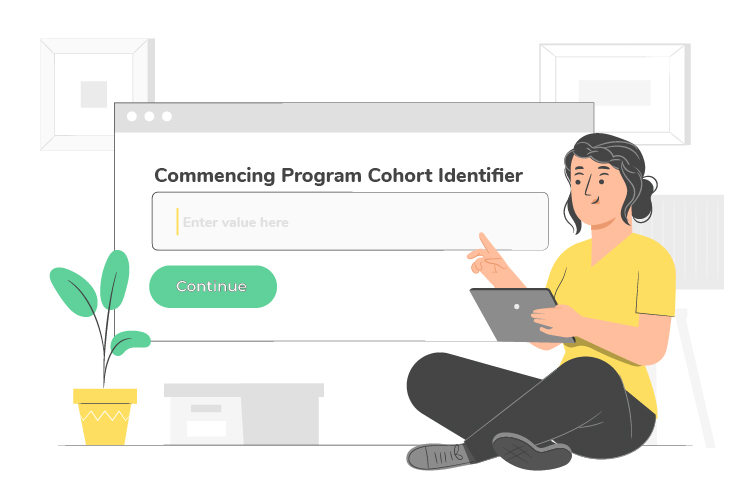
2024 Changes to Skills First
Taking into account RTO’s need for certainty, the Department has offered a Skills First contract of 2-years duration. The longer-duration

In an effort “to increase the ability of Victorians to reskill and to continue to participate in an evolving economy”, the Department of Education and Training announced that significant changes will apply to the Skills First eligibility settings from 1st January 2023. These changes include the removal of two of the limitations (“upskilling” and “two at level in a lifetime”) that formed part of the funding eligibility requirements for several years. The following blog focuses on the most critical changes in the 2023 Victorian VET Funding Contract, including eligibility and other aspects associated with the provision of training and assessment services.

From 1 January 2023, the upskilling requirement and the “2 at level in a lifetime” limit no longer apply for students enrolling in Skills First training. Due to this change, the Eligibility Exemptions initiative is no longer required, and this is why the number of exemptions you can grant isn’t included in your Schedule 2. These changes apply to all Skills First Training Provided, both TAFE and non-TAFE.
Removing the upskilling requirement means that students, regardless of their age, do not need to train in progressively higher qualifications to be eligible for Skills First. For example, an individual holding a Diploma issued by an Australian education provider can now enrol in Skills First for a Certificate III. They will not need an eligibility exemption. As a result, the student’s age is no longer relevant to their eligibility regardless of prior education and/or enrolment type.
The removal of the “2 at level in a lifetime” limitation means that it does not matter if an individual has started multiple programs at the same AQF level in the past. For example, an individual who has commenced two programs at Certificate IV level is eligible to enrol in more Skills First funded Certificates at AQF level IV.
Furthermore, JobTrainer finished at the end of 2022 and is no longer included in the 2023 VET Funding Contract. Obviously, individuals who enrolled under JobTrainer in previous years and are still undertaking training and assessment will keep being funded by this initiative until they either complete or withdraw from their program.
The Evidence of Eligibility and Student Declaration form has been updated to reflect all of these changes. You need to ensure that you utilise the most recent version of this form when assessing eligibility for Skills First. Please note that you can customise the Evidence of Eligibility and Student Declaration form for different types of enrolments, granted that you still gather all relevant information to assess eligibility.

You can rely on evidence sighted and retained for a previous enrolment for subsequent enrolments, as long as the evidence has not expired. However, training providers that are business users of the Document Verification Service (DVS) would have noticed that the transaction record generated by the Gateway Service Provider does not include the expiry date of the evidence verified (e.g. Australian Passport).
In 2023, the Department will allow the use of evidence of eligibility verified through the DVS without retaining the expiry date. Bear in mind though that this only applies to subsequent enrolments that occur within the same calendar year as the original DVS check. For example, if you have verified an individual’s evidence on the DVS in 2022, you can’t rely on the corresponding transaction record for a subsequent enrolment occurring in 2023. A new DVS check will have to take place in this scenario.

Training providers that are business users of the DVS would have also noticed that most Gateway Service Providers verify Concessions Cards only against the primary holder’s details. If a student is a dependent child or spouse of the primary holder, the Concession Card cannot be verified against the student’s details. The Department allows you to verify the Concession Card using the primary card holder’s details; however, in this case, you must make a note on the student’s file describing their relationship to the card holder.
Remember that the DVS verification record doesn’t show what type of concession card the student holds, so you need to collect this information from the student as part of the enrolment process. You need this information anyway to ensure that the correct Fee Concession/Exemption Type Identifier is reported in your NAT00120 file. You must attach a record of this information to the student’s file to verify that their concession card is a type of card the Department accepts.

Some of the requirements for Evidence of Participation (EOP) have been simplified to reduce the administrative burden. When subjects are delivered in clusters, training providers no longer need to provide additional evidence (e.g. lesson plan) to show what subjects were delivered in each training session. The attendance roll itself will suffice, provided it shows the subjects delivered in the class.
The requirement of providing additional evidence, other than the class’s attendance roll, where a student withdraws after attending only the first class of a program remains in place. However, the Department has now clarified that you do not need this additional evidence for the first class of every subject but just for the first class of the program to show that the class was not simply an induction, information session or orientation class.

The requirement to publish a summary of your most recent registration audit information on your website has been removed. The Department’s rationale for this is based on the fact that ASQA’s audit approach has changed, hence this information can no longer be consistent and comparable.

The base subsidy rate for training programs on the Funded Course List will increase by another $0.25 per hour in 2023. Remember to update any relevant forms or systems in your organisation (e.g. Statement of Fees, Finance Models in your Student Management System, etc.) to ensure that accurate information about the value of the government contribution is provided to your students at the time of enrolment.

Training providers delivering Foundation Skills courses will no longer be required to report pre-and-post testing LLN scores to SVTS. This requirement has been “frozen” for two years now and the Department has completely removed the associated clause from the new VET Funding Contract as they do not intend to reinstate it.
A new data element, the “Commencing Program Cohort Identifier”, has been created by the Department. It must be reported in the NAT00130 file and it is mandatory for every program enrolment commencing in 2023, both government funded and fee for service. This new element identifies students belonging to a specific cohort/s and may or may not be independent of the Funding Source Identifier.
Please refer to the table below for a summary of the available values, as prescribed in the latest version of the Victorian VET Student Statistical Collection Guidelines:
| Value | Description |
|---|---|
| AS | Asylum Seeker – a person is forcibly displaced from their home country and waiting for their request for sanctuary to be processed. |
| AU | Automotive Supply Chain Worker. For Skills First enrolments by individuals who are former Automotive Supply Chain Workers meeting the conditions specified in VET Funding Contracts and associated Guidelines. |
| FS | Learner Facing Financial stress – having difficulty meeting basic financial commitments due to a shortage of money, particularly in cases of insecure housing and/or food. |
| HS | Head Start Apprentice/Trainee. For Skills First enrolments as part of the Head Start program for apprentices and trainees within a school setting (not to be used for SBAT). Refer to conditions specified in VET Funding Contracts and/or associated Guidelines. |
| JV | Jobs Victoria Employment Network Client. For Skills First enrolments by individuals who are clients of a Jobs Victoria Employment Network provider. Refer to conditions specified in VET Funding Contracts and associated Guidelines. |
| LN | A learner with Literacy, Numeracy, and Digital Literacy needs. |
| RW | Retrenched Workers. For Skills First enrolments by individuals who are Retrenched Workers meeting the conditions specified in VET Funding Contracts and associated Guidelines. |
| RC | Reconnect. For Skills First enrolments by individuals who are referred to the training provider through the Reconnect Program. Refer to conditions specified in VET Funding Contracts and/or associated Guidelines. |
| VT | Veteran – A person who has served, or is serving, as a member of the Australian Defence Force, or as a member of the Reserves, with at least one day of continuous full-time service. |
| WR | Women returning to work – Women who are engaging in training with the intention of gaining employment after a career break. |
| NNNNNN | No specific cohort. |
| @@@@@@ | Not stated – question asked of the student but no answer provided. |
A maximum of three different values can be reported, without any priority order. For instance, if an individual is enrolling under the Asylum Seeker VET Program and the pre-training review has identified any LLN support needs, then they must be reported as either ASLN or LNAS.
Your SMS vendor should have already updated their product to address the implementation of this new reporting requirement but you also need to ensure your internal processes and systems have been updated as well to allow for the capture and reporting of these values.
The Specialisation Name is the program stream name that is printed on the student’s testamur. This field is used to report when a student is granted a testamur showing a specialisation stream of a Program. This field may be blank for enrolments continuing from 2022 however it must be reported in the NAT00130 file for enrolments commencing in 2023.

New events of which training providers must notify the VRQA and/or the AASN have been added to clause 1.5 of the Guidelines about Apprenticeship/Traineeship Training Delivery. In addition to previously listed events, training providers must also notify:
Please remember that every time a notification of an event listed under clause 1.5 of the Guidelines about Apprenticeship/Traineeship Training Delivery takes place, you should retain evidence of the correspondence or a dated file note in the student file.
The Department has also provided further advice on how both Apprentices and Trainees who lose their employment should be supported. The Retrenched Apprentices and Trainees Program is no longer limited to Apprentices and Trainees that have been impacted by COVID-19.
Further clarification about Training Plan extension requests has been provided too. The employer and their Apprentice or Trainee must submit a variation request to the VRQA before the nominal end date of the Training Contract.

As a result of amendments to the National Vocational Education and Training Regulator Regulations 2011, Skills First students at training providers registered with the Australian Skills and Quality Authority (ASQA) are now covered by the department’s WorkCover insurance policy while on practical placements. This has been effective from 13 April 2022. Students at training providers registered with the Victorian Registration and Qualifications Authority (VRQA) are already, and continue to be, covered by the department’s WorkCover insurance policy.
Students on interstate practical placements may also be covered. For the purposes of insurance coverage, when a practical placement is taking place interstate, the practical placement agreement must now:
Please note that it is possible for a Skills First funded student to undertake a practical placement interstate, however, this will depend on whether it is necessary for the training provider to provide any supervised training or assessment in the workplace as part of the placement. If this is the case, the student will not meet the physical presence requirement in the Contract. If the student is simply undertaking a set number of work practice hours with no supervised training and assessment, the physical presence requirement does not apply to the placement.
The Department expects that training providers have processes in place to support students to source and arrange any practical placements required for the completion of a training program. As part of the pre-training review, you should clearly communicate to students the practical placement requirements for their program and how they will be arranged. This includes any responsibilities they may have in arranging the placement and any potential difficulties or delays.

Taking into account RTO’s need for certainty, the Department has offered a Skills First contract of 2-years duration. The longer-duration

Managing the transition from superseded training products can be a complicated and time-consuming process for RTOs. From time to time,

According to the Audit and Assurance Findings Report by the Department of Education, Evidence of Participation (EOP) made the top 5 most common issues identified at audit. Make sure you’re on top of your EOP obligations!

The 2023 Victorian VET Funding Contract came with significant changes to the eligibility settings. In this article, we cover the 2023 changes relating to the Skills First eligibility requirements and evidence retention.

Not all Skills First funded training conducted in the workplace translates into an apprenticeship/traineeship enrolment. It is common for Training

At least once every month, training providers are required to successfully upload their training activity data for the current data collection year to SVTS. Training providers should check the Validation Outcomes report after every upload and must ensure that any data errors are rectified before re-uploading to SVTS.

